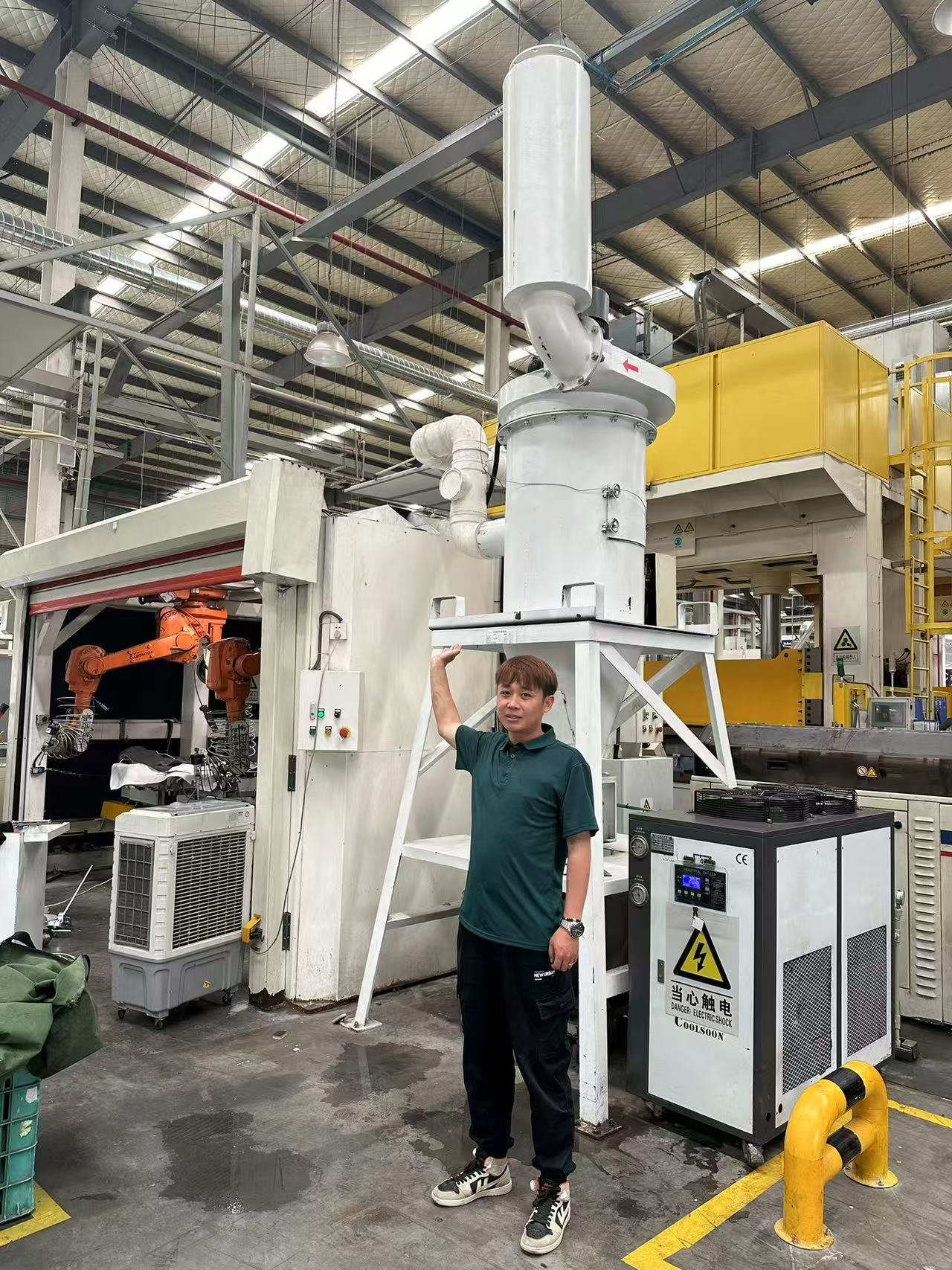News
Malaysia Robotic Waterjet Cutting Machine Site
Recently, our engineers visited the Malaysian customer site to observe the working application of robotic waterjet cutting. Robotic waterjet cutting provides professional, intelligent and efficient 3D robotic waterjet cutting solutions for the automotive, aerospace, composite materials and other fields. After integrating robot control technology, waterjet cutting can basically replace stamping and other mechanical cutting processes, greatly enhancing the flexibility of the production line of automotive interior manufacturers, thereby meeting the changing needs of the automotive industry and becoming the best solution for forming and cutting automotive interior parts (such as automotive carpets, automotive ceilings, dashboards, trunk pads, passenger car air ducts, thermal insulation pads, etc.).
What are the application scenarios of robotic waterjet cutting?

Robotic waterjet cutting technology has a wide range of applications in many industries, mainly including the following scenarios:
The robot water cutting technology has a wide range of applications across various industries, mainly including the following scenarios:
Manufacturing
Precision cutting of metals, plastics, glass, and other materials, suitable for producing complex-shaped parts.
Construction Industry
Used for cutting concrete, bricks, and other building materials, helping to achieve precise construction requirements.
Automotive Industry
In automotive manufacturing, water cutting is used to cut body parts and interior materials, ensuring high precision and low thermal impact.
Aerospace
Cuts lightweight alloys and composite materials to meet the stringent requirements of aircraft components.
Art and Design
Used for creating sculptures, installation art, and personalized products, providing flexibility and precision in creation.
Food Processing
Used for cutting food items, such as cakes and chocolates, ensuring hygienic and aesthetically pleasing cuts.
Medical Devices
Provides heat-free cutting in the production of medical devices, ensuring the integrity of materials.
These application scenarios demonstrate the importance of robot water cutting technology in improving production efficiency, reducing costs, and ensuring quality.
Advantages of Robot Water Cutting Compared to Traditional Cutting Methods

Robot water cutting has the following advantages over traditional cutting methods:
High Precision:
Water cutting can achieve extremely high cutting precision, suitable for complex and intricate designs.
No Thermal Impact:
There is almost no heat generated during the cutting process, avoiding thermal deformation and stress concentration in materials, thus maintaining their physical properties.
Wide Range of Applicable Materials:
It can cut various materials, including metals, plastics, glass, and ceramics, making it highly versatile.
Flexible Cutting Thickness:
Capable of handling a variety of material thicknesses, from thin sheets to thick plates, offering high flexibility.
Environmental Friendliness:
Water cutting uses water as a medium, making it relatively environmentally friendly and reducing harmful gas emissions.
Smooth Cutting Edges:
The edges after cutting are smooth, usually requiring no additional post-processing, saving time and costs.
High Degree of Automation:
Robot water cutting systems can achieve automated operations, improving production efficiency and reducing manual intervention.
High Safety:
Compared to other cutting methods, such as laser cutting, water cutting has a higher operational safety, reducing the risk of fire and injury.
These advantages have led to the gradual replacement of traditional cutting methods by robot water cutting in many industrial applications.





